Harison’s Yellow Rose
When I was growing up, there was a yellow rosebush on a neighboring farmstead that bloomed for a few weeks every spring. The farm was no longer occupied, the house dozed in, and the old barn was all that remained to show that people had once lived there. My mom took some cuttings from the bush, which eventually resulted in a blooming fragrant hedge in our yard. Last year, I decided I wanted to have that same rose. After doing some research on what variety it may be, I found out that it is called Harison’s Yellow Rose.
In 1824, George Folliott Harison, a New York lawyer and amateur rose hybridizer, crossed 2 rose varieties. The resulting hybrid was named Rosa x. arisonii, or Harison’s Yellow Rose. In the 1830s, a nurseryman took cuttings and marketed the rose. It was renowned at the time for its vigor, hardiness, resilience and resistance to disease. And with a yellow color rare in old rose varieties, it caught on quickly. It is also known as the Oregon Trail Rose due to the fact that it was often carried west by the American pioneers and now is naturalized in western North America. It is also thought to be the rose of “Yellow Rose Of Texas” song fame.![Rose01[1]](http://windowontheprairie.com/wp-content/uploads/2010/05/Rose011.jpg)
So I bought a bush from a mail order catalog, and planted the thorny 8 inch bare stem with roots when it arrived. Since last spring, it has grown into a 3ft. tall bush, and is now covered in blooms.
I’m so pleased with its growth rate and the fact that it is blooming the first year. Harison’s Rose only blooms a few weeks each spring, but what it lacks in bloom time, it makes up for in a profusion of lovely scented blooms.

![Rose06[1]](http://windowontheprairie.com/wp-content/uploads/2010/05/Rose061.jpg)
![Rose04[1]](http://windowontheprairie.com/wp-content/uploads/2010/05/Rose041.jpg)
![Rose05[1]](http://windowontheprairie.com/wp-content/uploads/2010/05/Rose051.jpg)
![Rose02[1]](http://windowontheprairie.com/wp-content/uploads/2010/05/Rose021.jpg)
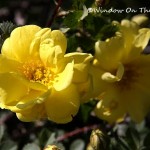

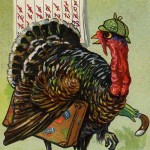
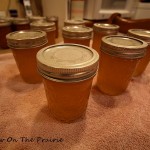

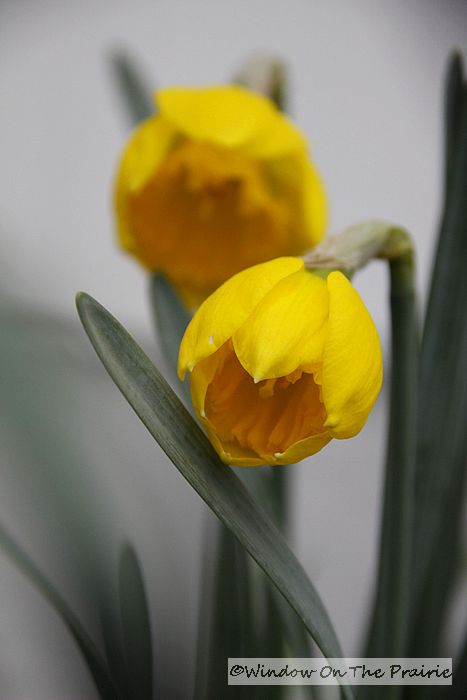
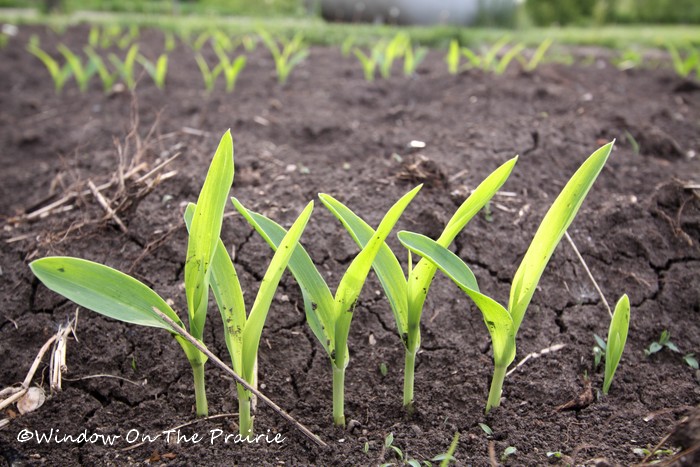
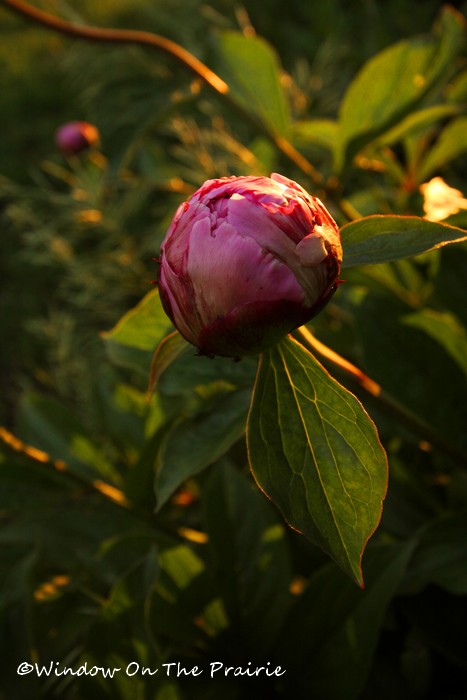
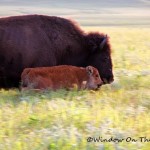
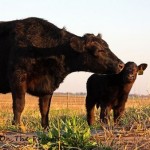
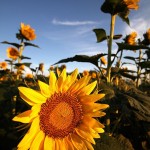







Beautiful. Good job tracking down what rose it was. Sounds like it’s going to be a mainstay for your garden for years to come.
Hi Gardener on Sherlock Street,
Absolutely! I may have to buy a few more too.
Thanks for visiting!
The moment I saw this rose I thought of my Grandparents. This rose came with them from Texas to New Mexico to Colorado, and whenever it bloomed my Grandfather would sing to all of us —The Yellow Rose of Texas.
Thank you for the memories.
Linda
http://coloradofarmlife.wordpress.com/
Hi Linda,
Thank you for sharing your special memory. Really touching.
Take care.
Love that rose! From the looks of the buds I’d say it truly will be covered. I wonder what the bush looks like in full bloom?
Roses are new to me as of last year and mostly all I have are “knock out”.
Yellow is my favorite long stem.
Hi Patsi,
I’ve considered a “knock out” rose. My favorite color in roses is pink.
Take care,
Suzanne
I love the rose. It would be beautiful to plant here, but my goats have a way of escaping to eat my rose.
Hi Teresa,
Goats are crafty that way. Although, they may have trouble with this one – the stems are liberally covered with thorns of all sizes.
I’m so glad you came over to my blog so I could follow you back here … I love this blog!
I love it when I’m able to trace plants that grew in my mother’s garden and then plant them in my own. It’s kind of like a link that I’m building through the generations. Who knows, maybe my daughter’ll do the same.
Here in India (especially the tropical coastal part) roses are a pampered lot. No matter how spectacular your garden is, unless there is at least one measly, bug-ridden rosebush in it, you’re just not considered worthy of the tag of ‘gardener’. But your yellow rose is so pretty… no wonder you took all that trouble to track it again.
Hello Sunita,
Thank you so much for dropping by! I also enjoy having plants that I remember from my mom’s garden. I have a bridal wreath bush, and irises, and phlox, and purple coneflower and chives. She gave me some plants years ago, and I’ve dug them up and brought them with me every time I’ve moved down the years. I would have to agree that everyone should have at least one rosebush.
Take care, and have a great day!
A rose that is tough and beautiful is always a boon. A lot of once bloomers are so special that I don’t mind if they only bloom in spring, especially with Japanese Beetles eating roses all summer.
Hello Sweetbay,
I agree with you – I don’t mind if it blooms just once. I just don’t have the time to spray and baby roses, so I love the Harison’s Rose, because it is virtually problem free.
Take care and have a great day.
My grandmother got a cutting of this beautiful yellow rose when she moved to Georgia from Washington State, which was 95 years ago as of 2011. My father and mother propagated it by cuttings and gave one to me. At the time, I had 23 hybrid tea roses in the yard of my future home, which was in the country. No house, just roses, and a dear father who brought water over in huge containers from his house about 1/3 mile away. Deer ate every blossom and every leaf of the hybrid teas, but they didn’t touch the Yellow Rose of Texas. Those thorns aren’t just rose thorns, they’re deadly rose thorns! They’re like closely spaced stalks of needles. I know goats are supposed to eat nearly everything, but they would certainly get little spines in their tongues if they tried this rose.
Hi Nancy,
Isn’t it just the best rose ever? I love that I don’t have to spray it either – no mold. So carefree, and the deer steer clear of it.
Thank you Suzanne. After moving back to Colorado 11 years aqo I have been looking for this rose. Growing up it grew wild all over the springs, down back alleys, in yards, cemetaries, etc. There aren’t many left. I am glad to know what to look for now. Thank you again for passing this information along.
You’re welcome Euni. If you are looking for one, I bought mine from Jung Seed co.. Here is a link. http://www.jungseed.com/dp.asp?pID=24930&c=402&p=Harisons+Yellow+Rose
I didn’t thank you, Suzanne, for having this site so I could find out that my grandma’s rose is Harison’s Yellow Rose. I didn’t know it until yesterday when I Googled “Yellow Rose of Texas.” I was telling my friend about it, and wanted to send her a photo, not having one of my own. The long drought nearly did mine in a couple of years ago, but there is a nice little green shoot coming up now. Do you fertilize yours? I never have, but maybe it would help?
Hi Nancy,
I fertilize mine in the early spring, and water only if we have a bad drought. Otherwise it is pretty carefree.
Thanks for visiting Nancy.
We have this rose on our Nebraska farm, originally homesteaded by a German family. I found additional info about the plant…looks like the photos didn’t come across’ but you have them on this site.
Yellow Scots Roses
The well-known rose ‘Harison’s Yellow’ has a special significance in the history of Scots Roses in America. It was a home-grown rose, raised in about 1824 by George Folliott Harison (1777-1846), a New York attorney. Harison sold a plant of it to William Robert Prince in about 1830 in exchange for a new Camellia that Prince had imported from Britain. The rose was effectively a double yellow Scots Rose – a hybrid between R. spinosissima and R. foetida, but not recognised as such at the time.
The hybrid between R. spinosissima and R. foetida has been given the name Rosa x harisonii in honour of George Harison and his ‘Harison’s Yellow’ but the hybrid probably arose in Britain before ‘Harison’s Yellow’ because double yellow Scots Roses were in existence from the very early years of the 19th century, having been raised by Robert Brown in Perth and Robert Austin in Glasgow.
I am not certain which of the surviving double yellow Scots Rose cultivars is the true original ‘Harison’s Yellow’. The name ‘Harison’s Yellow’ has been made famous as a rose that was carried across America by pioneer families and it is still found growing by deserted homesteads along the Oregon Trail. However, are all these roses the original ‘Harison’s Yellow’? I have not been able to explore the Pioneer Trail sites in person but photographs that I have seen of so-called ‘Harison’s Yellow’ in America as well as plants sold under the name in Britain and mainland Europe seem to reveal that they are not all the same cultivar. I suspect that other varieties of R. x harisonii or seedlings of ‘Harison’s Yellow’ itself may be involved. In Britain, gardeners and nurserymen have tended to apply one of a small number of names published in the 20th century rose books to any Scots Rose that they come across. Has this happened with ‘Harison’s Yellow’ in North America? Has there been a tendency to name any double yellow Spinosissima within a certain range of parameters as ‘Harison’s Yellow’?
Hybrids similar to ‘Harison’s Yellow’, were raised by Thomas Hogg of New York, Samuel Feast of Baltimore and possibly others. Seedlings were also raised from ‘Harison’s Yellow’. William Prince himself commented in 1846 that “numerous seedlings have been raised from this variety, but all that have come from under my notice have proved very similar, or inferior to it.” It is possible that old plants of so-called ‘Harison’s Yellow’ include seedlings from ‘Harison’s Yellow’ or another variety.
I have not seen a contemporary (1830s) illustration of ‘Harison’s Yellow’ but the variety ‘Hogg’s Double Yellow’ was described by Professor David Don and illustrated in colour in Sweet’s British Flower Garden of 1838. This semi-double variety “was brought from New York by Mr. James McNab, who received it from Mr. Thomas Hogg, Nurseryman in that city, by whom the plant was raised from seeds of the single yellow rose [R. foetida], and it is known in the nurseries by the name of ‘Hogg’s yellow American rose’. It is a pretty variety, but it is surpassed in the fullness of its flowers, and in the richness of colouring by Williams’s double yellow rose.”
‘Hogg’s Double Yellow’ from The British Flower Garden by Robert Sweet Vol. 4 (1838), courtesy the Arnold Arboretum Library
It has been suggested that ‘Hogg’s Double Yellow’ was in fact ‘Harison’s Yellow’ under another name and that James McNab had misunderstood its origin. However, the account seems clear and there is no reason why it should not have been another variety. Thomas Hogg was an expatriate Scot, born in Berwickshire, Scotland in 1778 and he emigrated to New York in 1820. His nursery catalogue of 1834 (the year in which James McNab and Robert Brown visited the nursery) listed five Scotch Roses and “Harrisonia” (Harisonii) but it does not include anything that could be ‘Hogg’s Double Yellow’. Hogg’s seedling may not have been available for sale by that time but by 1843, Hovey and Co of Cambridge, near Boston, Massachusetts were selling “Double yellow Harrison” (fine yellow, double), “Hogg’s Seedling Scotch” (double, pale yellow) and “Williams’ double yellow” (bright yellow). However, the name of Hogg’s plant is not in current use and both Robert Buist in his Rose Manual (1844) and Prince in his catalogue treat it as synonymous with ‘Harison’s Yellow’.
R. x harisonii ‘Williams’s Double Yellow’ (often called ‘Williams Double Yellow’ today) was raised in about 1826, in Pitmaston, Worcestershire, England. I am not convinced that the plant currently sold as ‘Williams Double Yellow’ is the same plant as that originally given the name. A description by Professor David Don and colour illustration published in Sweet’s British Flower Garden of 1836 shows a cultivar that is superior in flower form to the plant currently sold under the name. Although the ‘William’s Double Yellow’ sold today is striking in colour and abundance of bloom, it has rather messy, poorly formed individual flowers with a green bud in the centre.
‘Williams’s Double Yellow’ from The British Flower Garden by Robert Sweet Vol. 4 (1838), courtesy the Arnold Arboretum Library
Many other forms of R. x harisonii or seedlings of it are in cultivation today. Some of them are closer to R. spinosissima and others closer to R. foetida. Double yellow Scots Roses are common in old gardens in parts of Scotland, often forming a hedge in front of old cottages in country villages. Plants with the names ‘Lutea’ and ‘Lutea Maxima’ (both single), ‘Harison’s Yellow’, ‘Williams Double Yellow’ and ‘Old Double Yellow Scotch’ are the most readily available forms from nurseries in Britain, but I have seen other varieties in old gardens in Scotland.
Even more single, semi-double and double yellow cultivars are grown in Scandinavia, Finland and Germany, but some of these appear to be hybrids with ‘Altaica’ or other ‘Grandiflora’ types of R. spinosissima, unlike Scots Roses in habit .
A single form of R. x harisonii
One of many single and double hybrids between R. spinosissima and R. foetida (i.e. a form of Rosa x harisonii)
A double form of R. x harisonii found by the author in Scotland
Some forms of R. x harisonii have a pleasant scent similar to that of R. spinosissima, while others have the less pleasant scent of R. foetida. Some are so close to R. spinosissima in appearance that they are only immediately distinguishable as R. foetida hybrids or seedlings of such hybrids by their scent.
Other yellow hybrids of Rosa spinosissima were raised in the 20th century using rose species newly introduced from Asia. These include ‘Albert Edwards’, which is a hybrid of R. spinosissima ‘Altaica’ with R. hugonis that has single flowers of pale yellow (raised by Hillier Nurseries, Winchester, in 1938), and ‘Helen Knight’, which is a hybrid of ‘Altaica’ with R. ecae, having single, bright yellow flowers (raised by Frank Knight at the RHS Garden Wisley in 1966 and named in 1978). ‘Ormiston Roy’ is a hybrid with R. xanthina ‘Allard’. It has single yellow flowers and unlike the other two, has something of the habit of a Scots Rose. It was raised in the Netherlands by Doorenbos in 1938. There are several other more complex hybrids that contain R. spinosissima, such as ‘Frühlingsgold’ (raised by Kordes in Germany in 1937) and ‘Aïcha’ (raised by Petersen in Denmark in 1966). These beautiful roses have a relatively small percentage of R. spinosissima genes (‘Altaica’ in these cases) compared with other roses that I have mentioned. They are large shrubs with large leaves and flowers. They bear no resemblance to the Scots Roses.